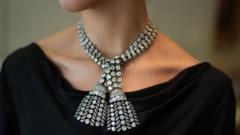Bill Pallot, known for his expertise in 18th-century French furniture, is on trial for allegedly deceiving buyers into purchasing forged antiques, including chairs supposedly owned by celebrated historical figures.
Art Dealer's Deception: The Fall of an 18th-Century Furniture Expert

Art Dealer's Deception: The Fall of an 18th-Century Furniture Expert
Renowned art consultant Bill Pallot faces trial in France for selling counterfeit antiques, including items falsely attributed to French royalty.
Bill Pallot, once a revered name in the world of 18th-century French furniture, now stands trial in France for allegedly committing fraud by selling counterfeit antique chairs with falsified royal histories. His dramatic fall from grace is attributed to a whistleblower, a former student whose deep immersion in the field enabled him to discern Pallot's deceptions.
Having built a career on a profound understanding of the art of French chairs, Pallot became a trusted consultant to various museums, galleries, and prestigious buyers, including international collectors and even Prince Abdullah bin Khalifa Al-Thani of Qatar. His celebrity status soared in Parisian art circles, leading to the designation of several dubious items as national treasures based on his endorsements.
At the height of his influence, Pallot claimed that pieces he sold had once been owned by figures such as Marie Antoinette and Madame du Barry, the mistress of Louis XV. His credentialing of these antiques was so influential that they commanded significant sums from gullible buyers. His 40-year-old publication, "The Art of the Chair in 18th Century France," was long regarded as a definitive text, even graced by a preface from his friend, famed fashion designer Karl Lagerfeld.
As government investigators delved into the art market's intricacies, Pallot’s alleged fraudulent activities came to light, shocking the elite community that once revered him. Now, he faces serious legal repercussions as authorities attempt to address the growing issue of counterfeit antiques infiltrating the market, resulting in a significant blow to the art world’s integrity.




